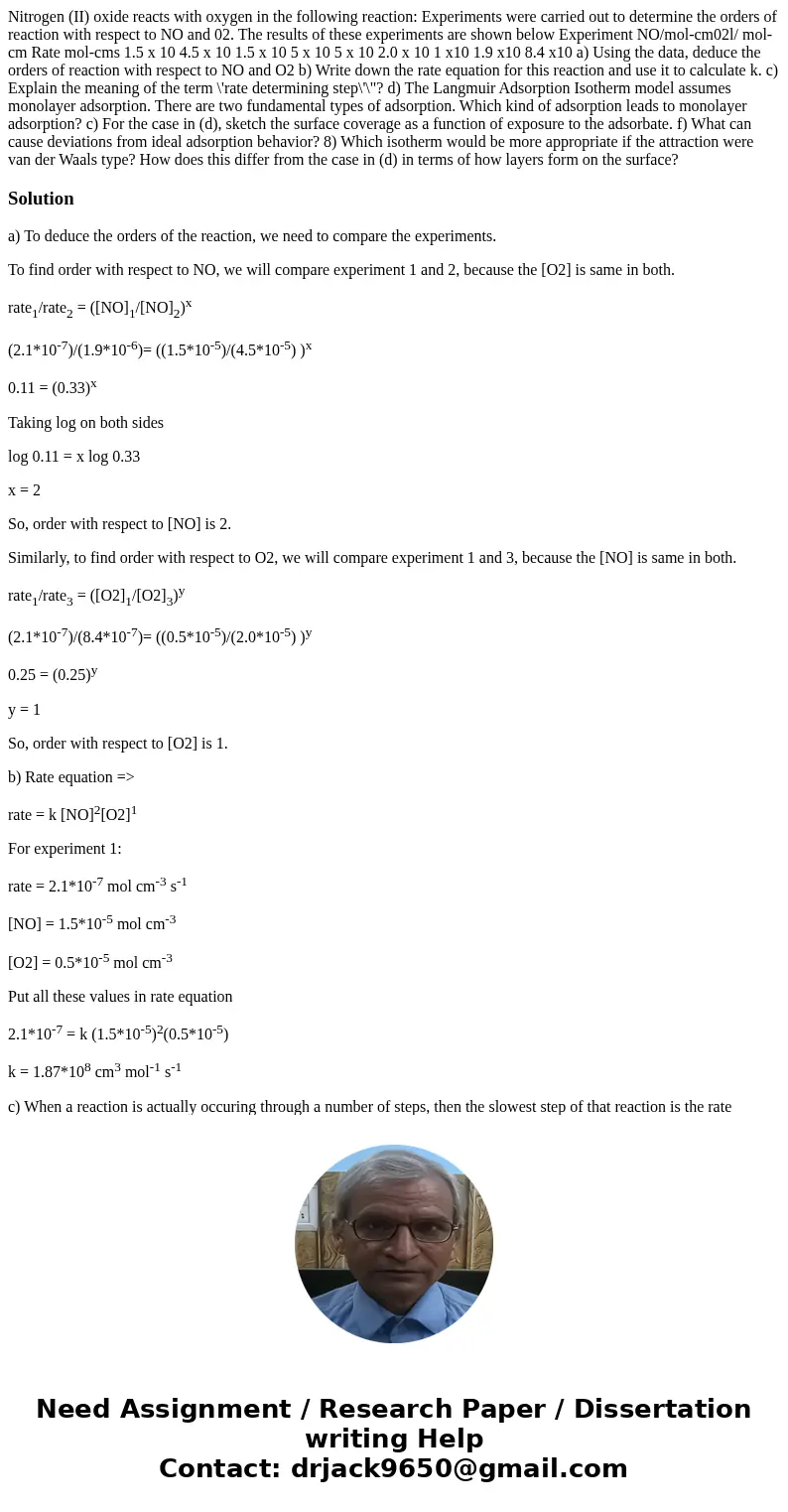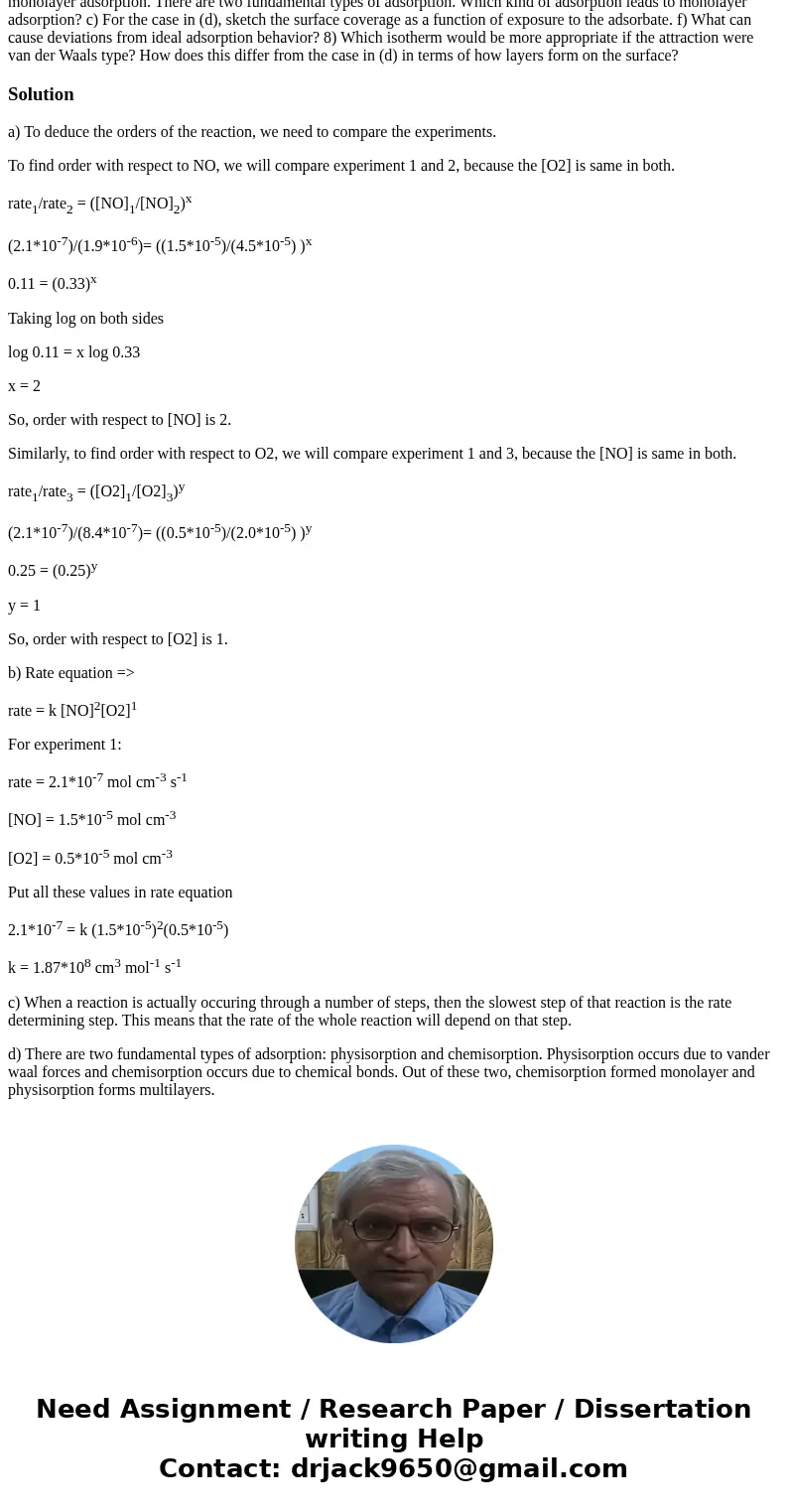Nitrogen II oxide reacts with oxygen in the following reacti
Solution
a) To deduce the orders of the reaction, we need to compare the experiments.
To find order with respect to NO, we will compare experiment 1 and 2, because the [O2] is same in both.
rate1/rate2 = ([NO]1/[NO]2)x
(2.1*10-7)/(1.9*10-6)= ((1.5*10-5)/(4.5*10-5) )x
0.11 = (0.33)x
Taking log on both sides
log 0.11 = x log 0.33
x = 2
So, order with respect to [NO] is 2.
Similarly, to find order with respect to O2, we will compare experiment 1 and 3, because the [NO] is same in both.
rate1/rate3 = ([O2]1/[O2]3)y
(2.1*10-7)/(8.4*10-7)= ((0.5*10-5)/(2.0*10-5) )y
0.25 = (0.25)y
y = 1
So, order with respect to [O2] is 1.
b) Rate equation =>
rate = k [NO]2[O2]1
For experiment 1:
rate = 2.1*10-7 mol cm-3 s-1
[NO] = 1.5*10-5 mol cm-3
[O2] = 0.5*10-5 mol cm-3
Put all these values in rate equation
2.1*10-7 = k (1.5*10-5)2(0.5*10-5)
k = 1.87*108 cm3 mol-1 s-1
c) When a reaction is actually occuring through a number of steps, then the slowest step of that reaction is the rate determining step. This means that the rate of the whole reaction will depend on that step.
d) There are two fundamental types of adsorption: physisorption and chemisorption. Physisorption occurs due to vander waal forces and chemisorption occurs due to chemical bonds. Out of these two, chemisorption formed monolayer and physisorption forms multilayers.


 Homework Sourse
Homework Sourse